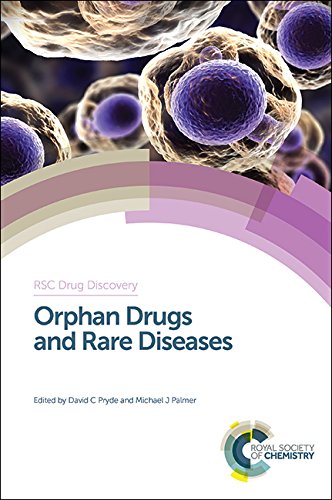

Most ebook files are in PDF format, so you can easily read them using various software such as Foxit Reader or directly on the Google Chrome browser.
Some ebook files are released by publishers in other formats such as .awz, .mobi, .epub, .fb2, etc. You may need to install specific software to read these formats on mobile/PC, such as Calibre.
Please read the tutorial at this link: https://ebookbell.com/faq
We offer FREE conversion to the popular formats you request; however, this may take some time. Therefore, right after payment, please email us, and we will try to provide the service as quickly as possible.
For some exceptional file formats or broken links (if any), please refrain from opening any disputes. Instead, email us first, and we will try to assist within a maximum of 6 hours.
EbookBell Team

5.0
110 reviewsOrphan drugs are designated drug substances that are intended to treat rare or ‘orphan’ diseases. More than 7000 rare diseases are known that collectively affect some 6-7% of the developed world’s population; however, individually, any single, rare disease may only affect a handful of people making them commercially unattractive for the biopharmaceutical industry to target.
Ground breaking legislation, starting with the Orphan Drug Act that was passed in the US in 1983 to provide financial incentives for companies to develop orphan drugs, has sparked ever increasing interest from biopharmaceutical companies to tackle rare diseases. These developments have made rare diseases, and the orphan drugs that treat them, sufficiently attractive to pharmaceutical development and many pharmaceutical companies now have research units dedicated to this area of research. It is therefore timely to review the area of orphan drugs and some of the basic science, drug discovery and regulatory factors that underpin this important, and growing, area of biomedical research.
Written by a combination of academic and industry experts working in the field, this text brings together expert authors in the regulatory, drug development, genetics, biochemistry, patient advocacy group, medicinal chemistry and commercial domains to create a unique and timely reference for all biomedical researchers interested in finding out more about orphan drugs and the rare diseases they treat.
Providing an up-to-date monograph, this book covers the basic science, drug discovery and regulatory elements behind orphan drugs and will appeal to medicinal and pharmaceutical chemists, biochemists and anyone working within the fields of rare disease research and drug development or pharmaceuticals in industry or academia.